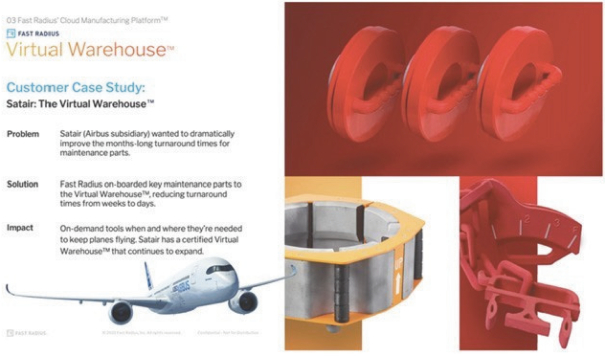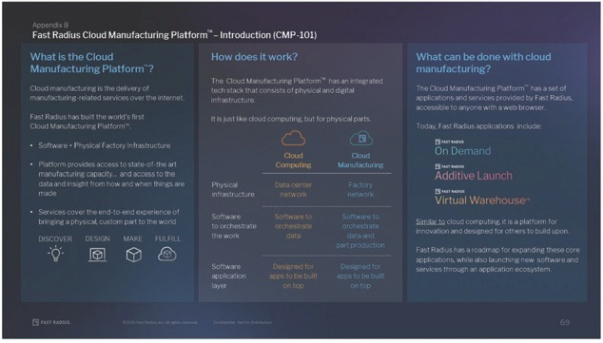
We believe our Cloud Manufacturing Platform ultimately enables a new infrastructure to make and move physical
products-one
that is more flexible, sustainable, and accessible than current global supply chains. We offer a wide range of manufacturing technologies including additive manufacturing (often referred to as 3D Printing), Computer Numerically Controlled (“”) machining, injection molding, sheet metal, urethane casting, and other manufacturing methods. We offer these manufacturing capabilities through our own microfactories as well as a network of curated third-party suppliers.
CNC
As of December 2021, we had four microfactories leveraging the following manufacturing technologies: (1) CNC machining, (2) Carbon DLS, (3) HP
Multi-Jet
Fusion, and (4) Stratasys FDM. Our Chicago location was recognized in 2018 by the World Economic Forum as one of the nine most advanced factories in the world embracing the tools of Industry 4.0. In addition to our full microfactories, we also have a suite of other technologies that we offer for small scale application and development, including machines from Formlabs and Desktop Metal. We plan to continue expanding the breadth of our microfactories in the coming years across a wide range of manufacturing technologies. In December 2021, we launched a new solution that allows customers to partner with us to design and stand up customized advanced microfactories, which are owned and operated by Fast Radius but tailored to a customer’s production needs and manufacturing methods. In addition to our own microfactories, we utilize a network of third-party suppliers to produce parts on behalf of our customers. These suppliers are curated and vetted for quality and key capabilities.
2







